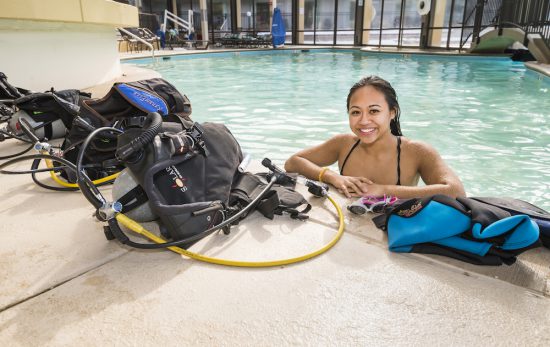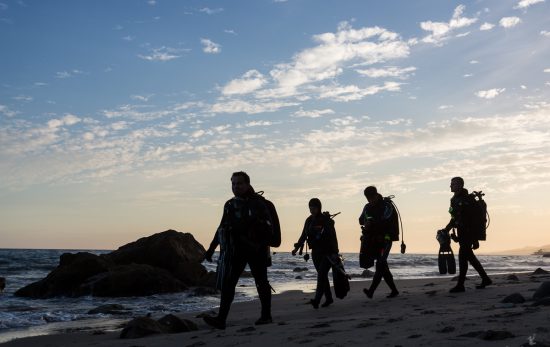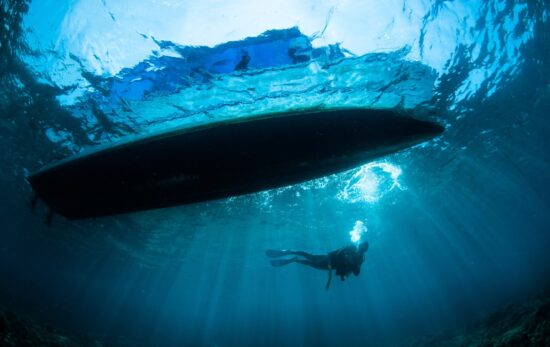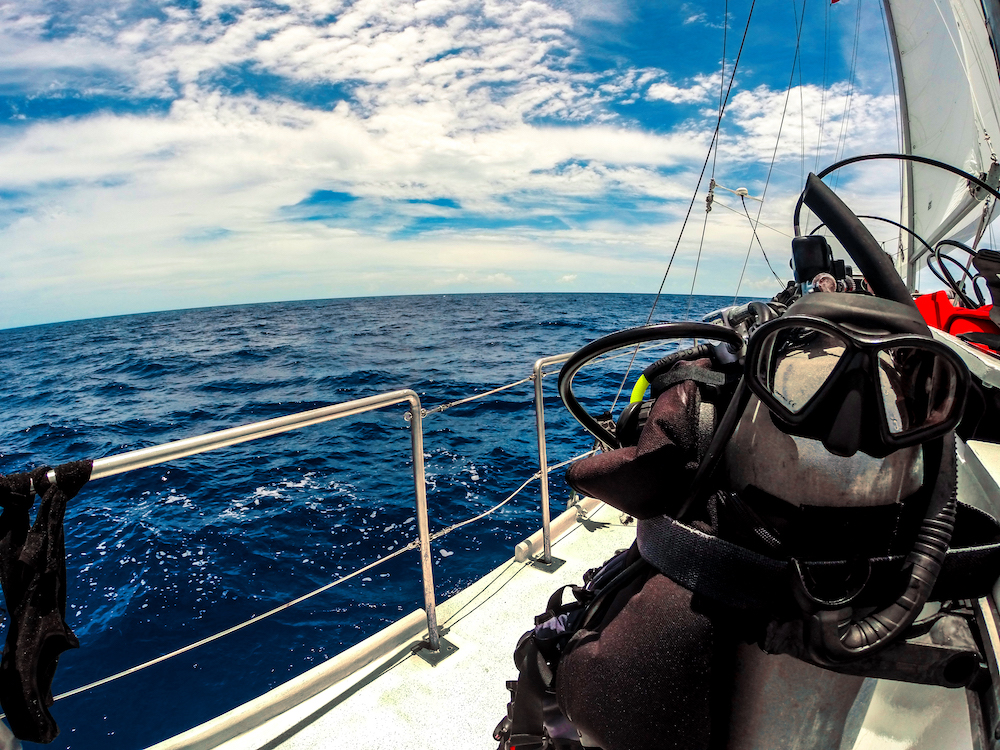
Where do the terms port and starboard come from? Why is the toilet on a boat called the head? Why isn’t it on the poop deck?
Today we answer divers’ frequently asked questions about boat terminology. We’ll also share the nautical history behind common terms like slush fund and scuttlebutt.
Why is speed measured in knots?
Up until the mid-1800’s sailors measured a ship’s speed using a tool known as a chip log. The chip log consisted of a piece of wood attached to a knotted rope on a reel. Each knot on the rope was evenly-spaced 47 ft. 3” (14.4 meters) apart. Sailors would lower the wood into the water then count how many knots paid out during one turn of a 30-second sand glass. Counting the knots allowed the sailors to quickly estimate how far the ship had traveled during the 30 second interval and thereby judge its speed.
One knot is equivalent to one approximate nautical mile per hour (1.15 mph/1.85 kmph). Modern boats and planes still measure their speed in knots, and it is also used to describe the velocity of waterways such as rivers and currents.
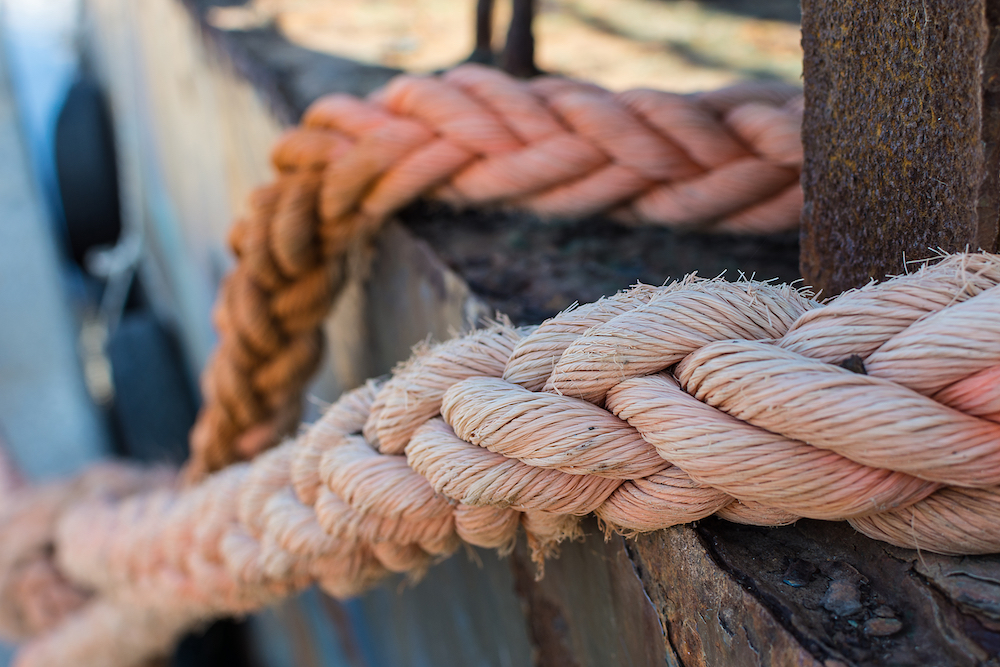
What is the difference between a nautical mile and a knot?
– A nautical mile measures distance and is equal to one minute of latitude
– A knot describes speed of approximately one nautical mile per hour
Why port and starboard instead of left and right?
When facing toward the bow (front) of the ship: Port refers to the left and starboard refers to the right. Unlike left and right, which may describe different directions depending on which way the speaker is facing, port and starboard never change. English-speakers may find it helpful to remember port = left because the two words have the same number of letters. So where did these words come from?
In the olden days of sailing, before rudders, sailors used a large oar located in the right rear of the ship to steer. The steering oar was placed on the right side of the ship because most people are right-handed. The word starboard comes from either Old English steorbord or it originated the Old Norse stýriborð, Vikings used the word borð to describe the side of a ship, and the steering oar was called a stýri. In short: starboard refers to the side of the ship where the steering oar used to be.
With a large oar on the right side of the ship, it was easier to dock on the ladebord, or loading side. Unfortunately, larboard and starboard sound very similar, especially when shouting across a creaking boat. So, in the mid-1800’s the Royal Navy ordered that port be used instead of larboard. The word port describes the place where workers, known as porters, would move or port goods on and off the ship.
What’s a poop deck?
The humorously named poop deck has nothing to do with bodily waste and instead derives from the French word for stern la poupe. The poop deck is typically an elevated deck at the back of the ship where the captain can shout orders to the crew and the helmsman can navigate.
Why is the toilet on a boat called the head?
When ships were powered by wind, the airflow on a ship typically went from back to front. Therefore, the ideal location for anything smelly was at the front of the ship. If a sailor needed to relieve himself, the best place to do it was up front (possibly near the figurehead) where wind could carry bad smells away and waves might wash away any unwanted material.
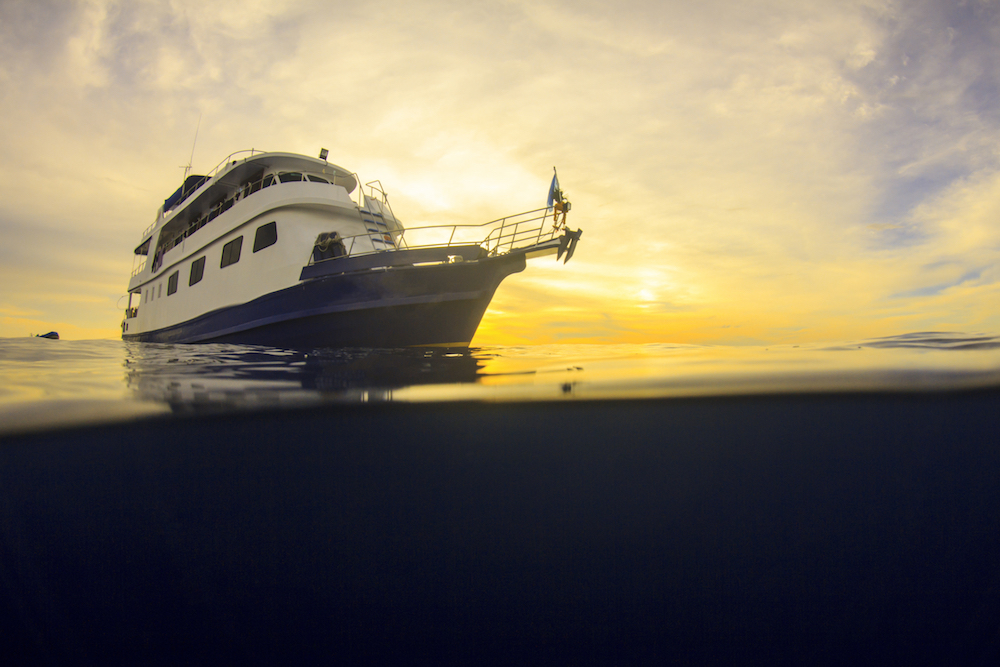
Nautical Terms That Have Sailed Into Everyday Use
Numerous nautical terms have made their way into everyday conversation. Here are a few:
Fathom – A fathom is a unit of measurement. One fathom describes a depth of approximately six feet (1.8 meters). In a nautical environment, a fathom is used to describe the depth of water beneath a ship. In everyday use, it describes trying to take the measure of, or get to the bottom of something.
Feeling Blue – A ship that lost her captain or officers sometimes had a blue band painted along her hull. The crew might also fly blue flags.
Hazing – The miserable experience of being sleep deprived and made to do humiliating things was invented by ship captains – not frat boys. In the 1800’s, new crew members were sometimes forced to work many hours without rest while continually harassed by the captain and senior members of the crew.
Scuttlebutt – Sailors stored drinking water in barrels (known as butts) and a scuttlebutt was a barrel with a hole in so sailors could reach in and get a drink. Just like today’s water coolers, the scuttlebutt was where crew members would gather to share gossip.
Slush fund – Fat was a valuable commodity in the olden days of sailing. A clever cook could skim the fat off a pot of boiling meat or collect it from the inside of meat storage barrels. This slushy fat was then sold to tallow makers and the money received was known as the slush fund.
Turn a blind eye – As the story goes, Vice Admiral Lord Nelson (who was blind in one eye) ignored a signal to stop fighting during the Battle of Copenhagen. Nelson put his telescope up to his blind eye and insisted he didn’t see his commander’s signal to retreat. The British ultimately won the battle, and the term “to turn a blind eye,” was born. Some argue this story is a myth, but we hope you’ll agree it’s a good story.
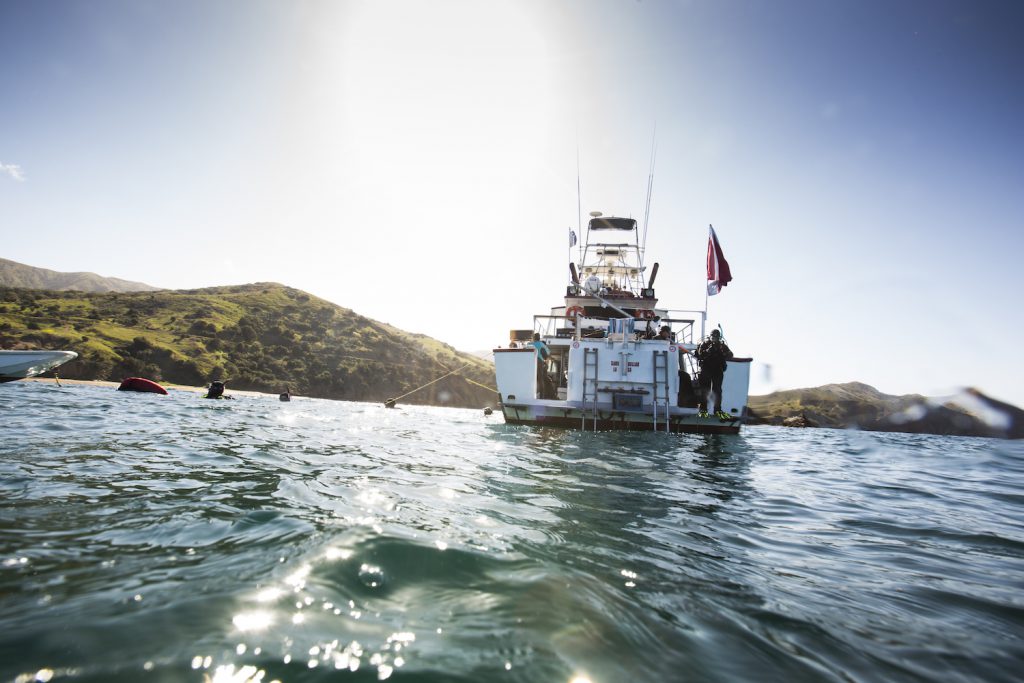
If you’d like to learn more about nautical terms and boat etiquette, enroll in the PADI Boat Diver specialty. You’ll learn about diving off of all types of boats from small inflatables to large liveaboards.
The PADI Wreck Diver specialty course is a must for divers interested in nautical history. Wreck diving offers a fascinating window to the past, and during the Wreck Diver specialty you’ll learn about this history of local wrecks and how to explore them safely.
Contact a PADI Dive Center or Resort to learn more about the PADI Boat Diver or PADI Wreck Diver Specialty. Each specialty gets you one step closer to the elite PADI Master Scuba Diver Rating.
Love scuba diving? Love being on a boat? A Liveaboard dive trip might be for you. Contact your local PADI Dive Center or Resort, or visit PADI Travel Network online to browse liveaboard destinations and operators.

